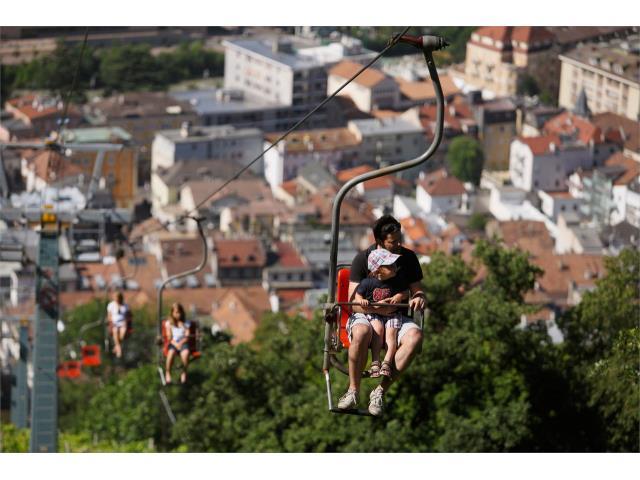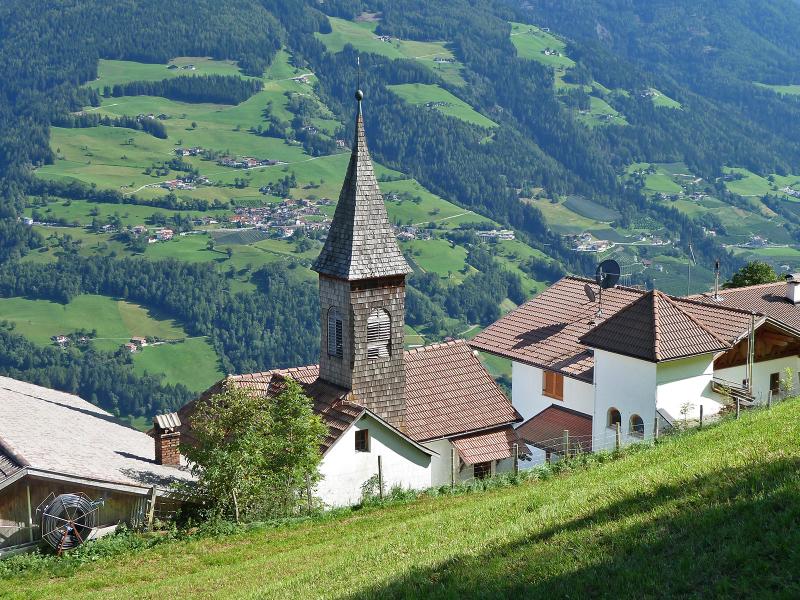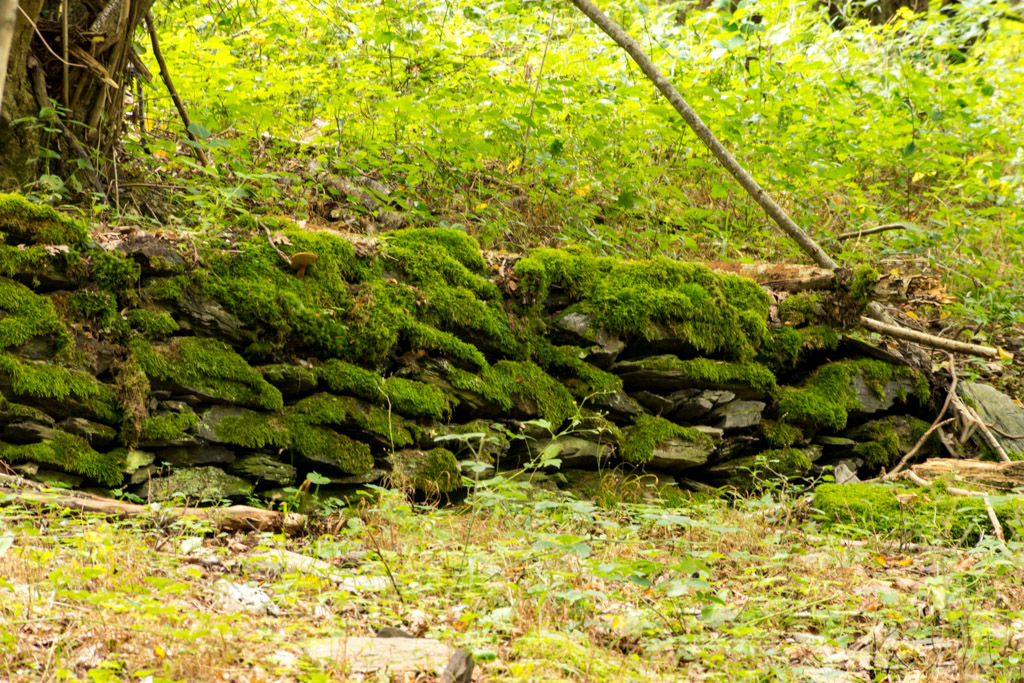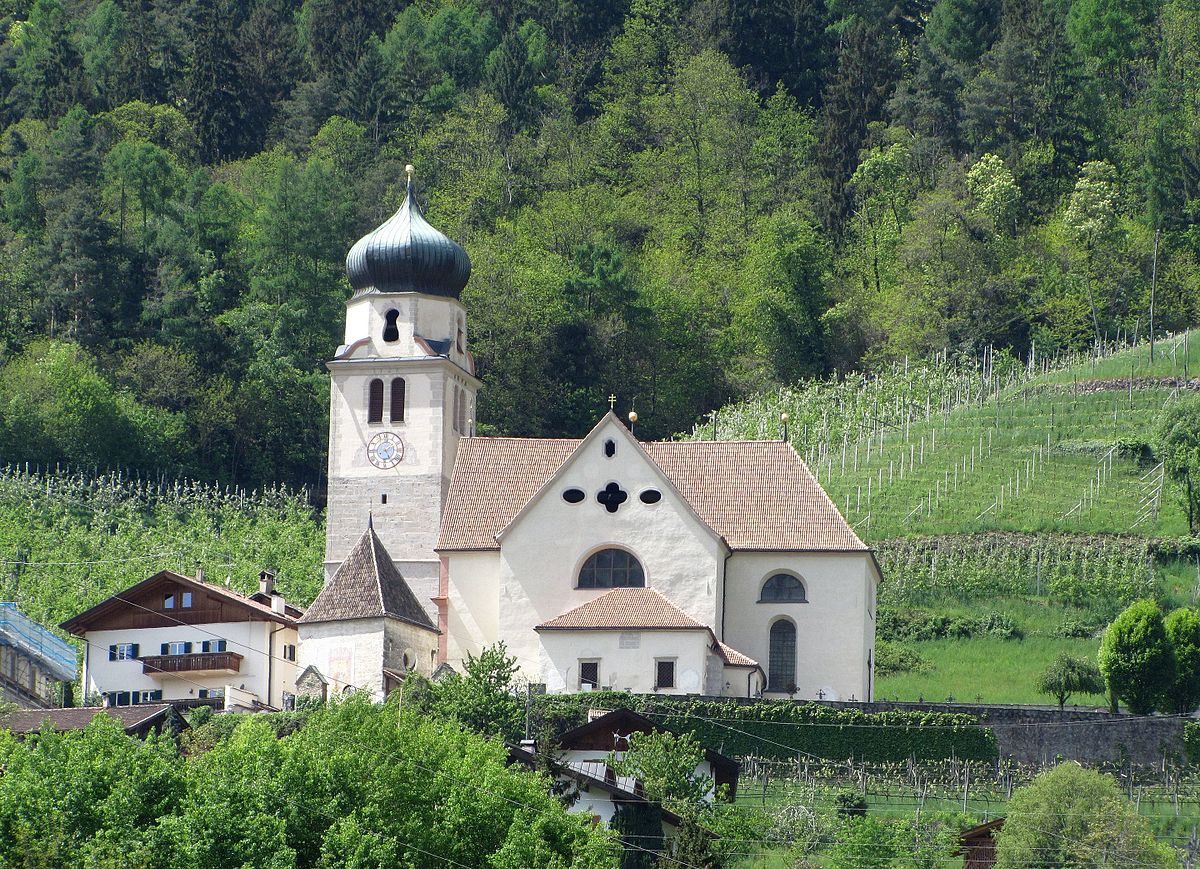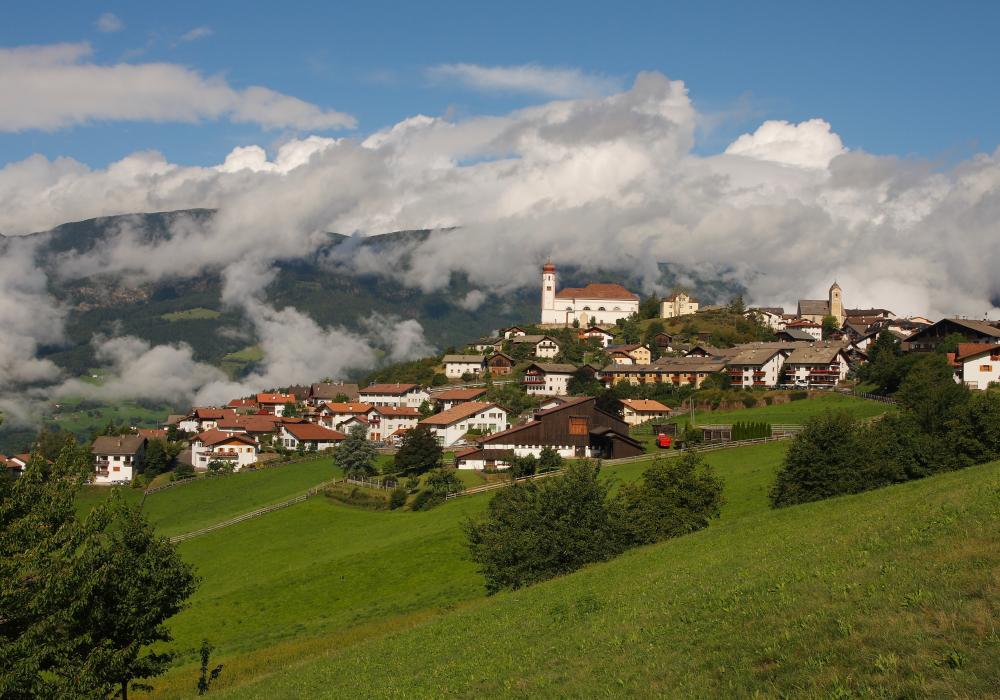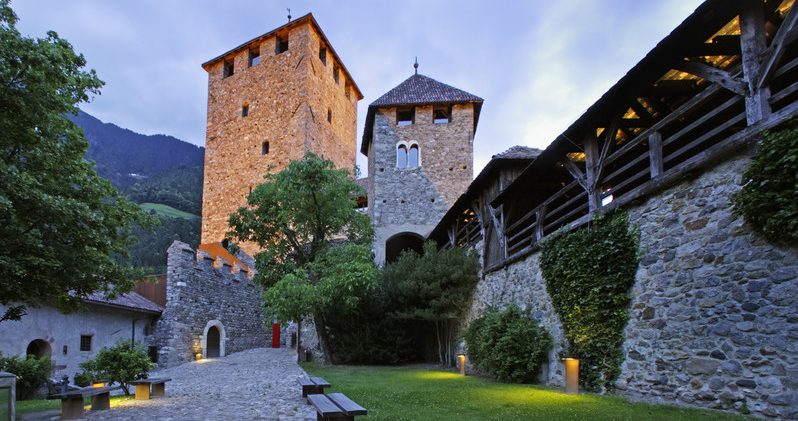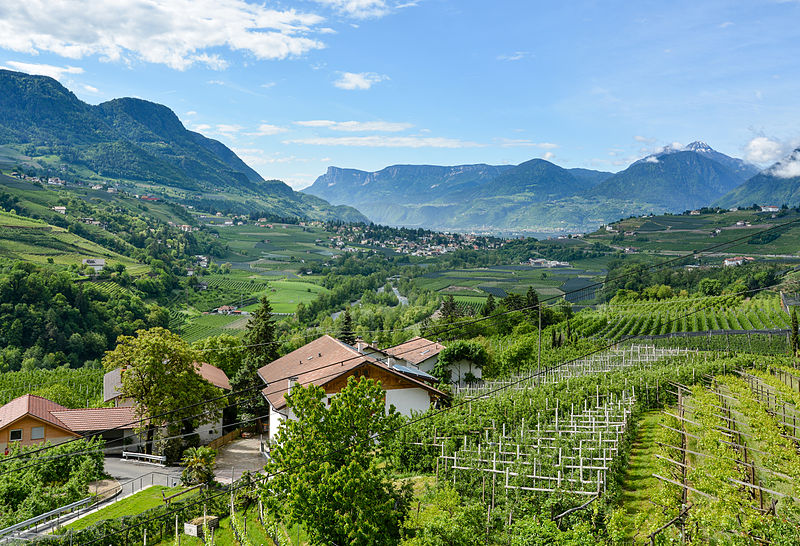How to reach Lajen
Laion is an idyllic mountain town located on a sunny plateau along with the villages of S. Pietro/S. Peter, Tanursa/Tanürz, Ceves/Tschöfas, Fraina/Freins, Albions and Laien-Novale/Lajen-Ried, where you can admire the presumed birthplace of the famous medieval minstrel Walther von der Vogelweide (1168-1230).
Every season offers unforgettable experiences: in the spring, when the cherry trees are in full bloom, you can still ski without any problem in Gardena/Gröden valley. The well-marked
paths are a constant invitation to let yourself be tempted by the beautiful hikes through the countryside, to climb up to the mountain pastures and the peaks with their splendid scenery, or to go hiking in the Dolomites.
In fall, you will be amazed by the splendour of the broadleaf forests around Laion. The views from Wasserbühl over the valley, “Castel Forte/Trostburg” Castle and the villages on the opposite slope of the Valle Isarco are truly unforgettable. In the fall, there are many typical inns that take part in the traditional Törggelen .
In the winter, you can have fun playing curling, on the natural sled run , go cross-country skiing or take a stroll on the snow-free paths . The “Dolomiti Superski” area , where all skiers will find just what they’re looking for, is just 10 km away. No matter what you enjoy, Laion and its villages have a lot to offer, without ever giving up your well-deserved peace and quiet.
